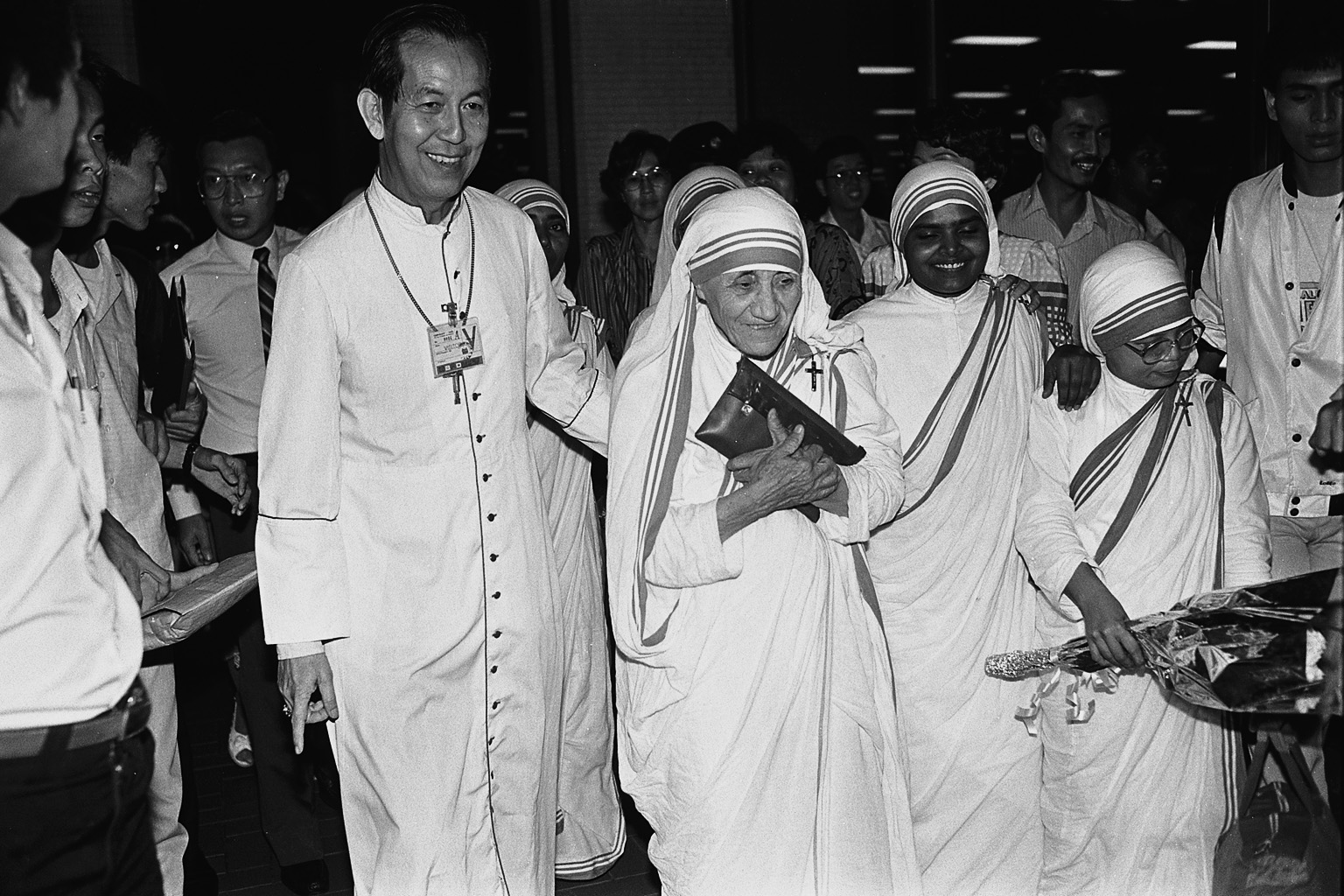Mother Teresa set for sainthood: 7 things you may not know about the Catholic nun
Sign up now: Get ST's newsletters delivered to your inbox

Mother Teresa arriving in Singapore to scores of cheering Singaporeans at Changi Airport on Jan 8, 1987.
PHOTO: ST FILE
Chew Hui Min
Follow topic:
Known across the world for her charity work, Mother Teresa was admired by many but also drew some critics.
She is to be canonised at a ceremony on Sept 4 after a Vatican panel recognised a second miracle attributed to the late Catholic nun.
Here are seven things you may not know about her life and legacy:
1. ALBANIAN, MACEDONIAN OR INDIAN?
Mother Teresa was born Anjeze Gonxhe Bojaxhiu in 1910 to Albanian parents in what is now Skopje in Macedonia. It was then part of the Ottoman Empire.
She was granted Indian citizenship in 1951.
Mother Teresa, who founded the Missionaries of Charity, died of heart failure in 1997 at the age of 87 and received a state funeral.
After her death, Albania, Macedonia and India had some diplomatic tussles over her final resting place, CNN reported in 2009.
She lies now in the heart of the Kolkata, in the courtyard at the Missionaries of Charity compound.
2. BECOMING MOTHER TERESA
Anjeze, as she was known as a child, was drawn to religion and missionary work at the early age of 12.
She joined the Sisters of Loreto at 18 and was known as Sister Teresa, after the patron saint of missionaries, Saint Therese de Lisieux.
She was teaching at the Loreto convent school in Kolkata when she felt that her true calling was to work among the poor. She started an open-air school, then a home for the dying destitute, a leper colony and a home for orphans.
Her work earned her the name Saint of the Gutters.
In 1950, she started the Missionaries of Charity with 13 members and it now has around 5,000 members in about 120 countries. There is a chapter in Singapore, located in Jurong.
She won the Nobel Peace Prize in 1979 for her work alleviating the suffering of the "poorest of the poor".
3. HER FIRST, CONTENTIOUS MIRACLE
The path to sainthood requires at least two miracles.
The first miracle attributed to Mother Teresa was recorded in 1998, when an Indian woman Monica Besra was reportedly cured of an abdominal tumour after nuns prayed for her, and placed a Mother Teresa medallion on her stomach.
Her husband later said doctors at an Indian hospital cured his wife, but hospital records of Ms Besra's treatment went missing, apparently taken by a sister of the Missionaries of Charity.
Ms Besra insisted she was healed by a miracle.
Mother Teresa was beatified by then pope John Paul II in a fast-tracked process in 2003, in a ceremony attended by some 300,000 pilgrims. Beatification is a first step towards sainthood.
4. HER SECOND MIRACLE
The second miracle involved a 35-year-old Brazilian man who had not long been married when he was diagnosed with eight brain tumours in 2008, according to Vatican expert Andrea Tornielli.
On Dec 9, the man was wheeled into the operating room in an induced coma, but doctors were forced to delay the medical procedure by half an hour because of technical problems.
While they waited, the man's wife led prayers to Mother Teresa in the hospital's chapel.
When the surgeon returned to the operating room, he is said to have found the patient awake, sitting up and asking "what am I doing here?".
"I have never seen a case like it," the surgeon was quoted as saying, after a CAT scan showed that the Brazilian's tumours "had suddenly and inexplicably disappeared", Tornielli said in La Stampa daily.
5. Her critics
Critics of Mother Teresa have said that she opposed contraception and abortion, setting back the progress of women.
British author Christopher Hitchens wrote a critical biography titled The Missionary Position: Mother Teresa In Theory and Practice.
He accused her of hob-nobbing with unsavoury characters such as Haiti's ex-president Jean-Claude Duvalier.
Questions have also been raised over the Missionaries of Charity's finances, as well as conditions in the order's hospices where there has been resistance to introducing modern hygiene methods.
6. Pilgrimage site
Her grave in her order's headquarters has since become a pilgrimage site, and Sept 4 is marked as a day dedicated to the late nun's memory.
In the Mother Teresa Centre in Kolkata there is an inscription: "Although Mother's Tomb is a sacred place, you do not need to remove your footwear. We are concerned about the loss of shoes and the distress caused thereafter."
7. Crises of faith
Mother Teresa suffered crises of faith for most of her life and even doubted God's existence, according to a set of letters published in 2007.
"Jesus has a very special love for you. As for me, the silence and the emptiness is so great that I look and do not see, listen and do not hear," the missionary wrote to one confidant, Reverend Michael Van Der Peet, in 1979.
The letters, some of which she wanted destroyed, appeared in Mother Teresa: Come Be My Light. Extracts of the book appeared in Time magazine.
"If there be God - please forgive me - When I try to raise my thoughts to heaven - there is such convicting emptiness," she wrote in another letter.
Sunita Kumar, a missionary spokesman who worked closely with Mother Teresa, said the late nun was an extraordinary woman who believed hard work was the best way to serve God.
"She of course read the Bible but her main understanding was to serve the poor," Kumar told the NDTV network. "Look at the work she did, not a day's holiday, not a day's rest."

